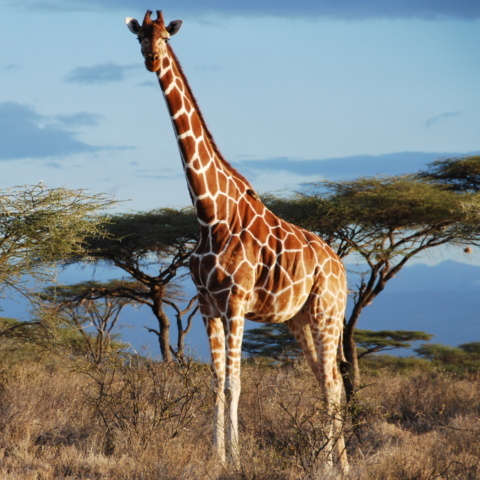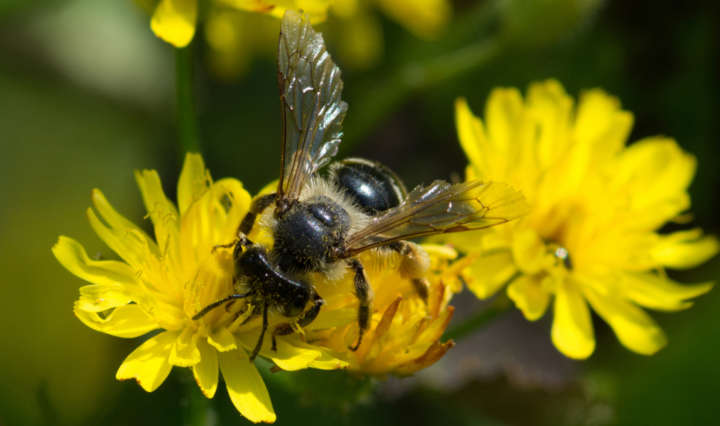Darwin or Kimura – Natural Selection or Pure Chance?
New literature review aims to clarify a heated debate between evolutionary biologists
Some of nature’s mysteries have kept scientists busy for decades – for example, the processes which drive evolution. The question of whether certain differences between and within species are caused by natural selection or by chance processes divides evolutionary biologists even today. An international team of researchers has teased apart a scientific debate concerning the evolutionary theories of Darwin and the Japanese geneticist Kimura. Their conclusion: the debate is unnecessarily convoluted by the co-existence of different interpretations.
Due to his contributions to geological and biological sciences, the British naturalist Charles Darwin (1809-1882) is considered one of the most important natural scientists. His influential work “On the Origin of Species” (1859), with its strictly scientific explanation of the diversity of life, forms the basis of modern evolutionary biology. Darwin concluded that species evolve through natural selection: well-adapted organisms survive, others don’t.
However, by the end of the 1960s, the Japanese geneticist Motoo Kimura (1924-1994) proposed that at the genetic level, most changes in the course of evolution do not offer direct advantages or disadvantages to the individual but are simply neutral. According to his “Neutral Theory of Molecular Evolution”, first published in 1968, most of the genetic variation within and between species arises from random fluctuations of neutral mutations.
Are these two theories in conflict, or can they be reconciled? This is one of the questions that researchers from the Senckenberg Society for Nature Research, the universities of Durham and East Anglia and the LOEWE Centre for Translational Biodiversity Genomics (LOEWE-TBG) discuss in a literature review. The review, published in the journal “Biological Reviews”, lists several aspects of the Neutral Theory that are open to different interpretations. According to the authors, these ambiguities have clouded the decades-long debate between its proponents (“Neutralists”) and opponents (“Selectionists”).
One such ambiguity, and arguably the most contentious one, concerns the implications of the Neutral Theory for the evolution of an organism’s visible characteristics, the so-called phenotype. Do numerous neutral mutations at the genomic level imply that phenotypic differences within and between species are also neutral and not, as assumed by Darwin, the result of natural selection?
Even within the group of “Neutralists”, opinions on this matter may differ, as the study authors point out. Some suggest that neutral mutations mainly occur in the non-coding part of the genome (e.g., ‘junk-DNA’), which has no effect on the appearance or functioning of an organism. Others suggest, instead, that neutral mutations are also common in the functional part of the genome (e.g., genes), and hence do cause phenotypic differences.
“The first position is fully compatible with Darwin’s concept of speciation by natural selection, while the second offers at times a potential alternative explanation,” explains the study’s lead author, Dr Menno de Jong of the Senckenberg Biodiversity and Climate Research Centre. “We refer to these different interpretations as the narrow and the extended versions of the Neutral Theory, because in the second case the Neutral Theory is extended to the phenotype. Kimura originally advocated the narrow version, but eventually accepted the extended version.” Even Darwin – more than 100 years before Kimura proposed the Neutral Theory – did not rule out the possibility that ‘variations neither useful nor injurious’ (Origin of Species, chapter 4) could manifest themselves over time as visible differences within and between species.
De Jong and his co-authors stress that “Neutralists” do not reject the idea of evolution by selection. “For instance, Neutralists do not question whether giraffes acquired their spots through natural selection. They only advocate neutrality when it comes to more subtle differences, such as the exact shape and size of the spots that characterise the different giraffe species and subspecies,” says De Jong. “Proponents of the selection theory and the narrow version of the Neutral Theory will assume that each fur pattern evolved to fit the respective regional environment, while Neutralists adhering to the extended version of the theory may argue that the precise details of fur colouration do not offer significant survival advantages.”
“With our literature review, we want to contribute to a more constructive debate between the proponents and opponents of the Neutral Theory,” says co-author Axel Janke, Professor of Comparative Genomics at Senckenberg and LOEWE-TBG. “When the ‘Neutral Theory of Molecular Evolution’ was founded in the late 1960s, there was only a handful of data on proteins. In the meantime, we have arrived in the era of genomics, which gives us completely new insights into evolution. Numerous genome sequencing initiatives worldwide are contributing to unlock the secrets of evolution and gain a better understanding of speciation and the underlying processes.”
Publication in Biological Reviews:
Menno J. de Jong, Cock van Oosterhout, A. Rus Hoelzel, Axel Janke: “Moderating the neutralist–selectionist debate: exactly which propositions are we debating, and which arguments are valid?” https://doi.org/10.1111/brv.13010




